Hungarian cuisine merges flavorful spices, such as paprika, with hearty stews and meat dishes, and a trip to Hungary wouldn’t be complete without sampling one of the country’s national dishes, Goulash Soup. Perhaps surprisingly, a lot of controversy surrounds goulash, and the definition of goulash changes depending on which Eastern European country you’re in. To find out why so many people are arguing over a mix of potatoes, beef, and sweet paprika—as well as to get my hands on a traditional goulash soup recipe straight from the source—I contacted The Chefparade Cooking School, which offers cooking class to travelers in Budapest.
Goulash Soup features a hefty dose of sweet paprika powder—a spice that remains in the back of many American spice racks. “Hungary’s flat countryside, good soil, and strong sun create a flavorful paprika that cannot be duplicated,” explains Lilla Lekrinszki, who works at Chefparade Cooking School. Hungary also has several types of dried paprika—from spicy to sweet—and each has its own use. All dried paprikas are made from dried peppers, such as bell peppers and chili peppers, and sweet dried paprika, even though brilliant red, is not spicy. On the other hand, spicy dried paprika puts the devil in deviled eggs.
To make things easy, Lilla offers encouraging advice. “The only thing you must know about paprika is whether it’s spicy or not and whether the dish you’re making should be spicy or not.” That being said, Chefparade’s Goulash Soup recipe calls for sweet paprika, which is sold in most U.S. grocery stores under the name Hungarian Paprika.
As Lilla and I continued our correspondence, she told me a story about a woman who had Hungarian ancestors and who took a Chefparade cooking class. “This woman had a grandmother who was Hungarian and who used to make zöldbab fozelék (a string bean stew),” says Lilla. “When her grandmother passed away, the woman never ate zöldbab fozelék again. We helped her to recreate the dish, and when she took a bite she couldn’t contain her tears. She just said, ‘Thank you! You took me back to my grandmother for a while!’ I think that’s what we can give to people; not only delicious food but sometimes nice memories from the past or unforgettable experiences for the future.”
Technically, I don’t have any Hungarian ancestors that I know of, but culinary tourism classes always let me feel like a local.
Lilla went on to share her opinion on what true goulash should be. “Hungarian goulash, known as Gulyás-leves, is a soup with a broth, whereas other countries make a stew-like goulash. Our goulash is liquidy rather than saucy, and we usually eat it with bread as a main dish.” She offered a great tip to travelers, too. She explained that the word paprika is used to mean peppercorns, fresh chilis, and bell peppers—you can even get pickled paprika on a sandwich and roasted paprika on a salad. So, when traveling, make sure you don’t order freshly ground pickled paprika on your salad. Then again, that might be delicious!
For true food geeks, here are a few more tips, furnished by Chefparade Cooking School, for cooking with paprika: First, note that sweet paprika contains some sugar, and it will caramelize if exposed to heat for too long while cooking. This makes it bitter. Also, Paprika has a flour-like consistency, and it can be used as a thickener, e.g. in a roux. Finally, there’s no one way to use paprika, and, just like seasoning a dish with salt and pepper, seasoning with paprika is up to one’s own tastes!
Gulyás-leves / Goulash Soup
Serves 4 (Ravenous Traveler-tested and approved)
Ingredients for Four People:
- 1 lbs beef, such as chuck or round steak
- 3 tbsp butter or olive oil
- 2 red onions (finely chopped)
- 1 clove garlic (chopped)
- 4 bay leaves
- 1 tsp caraway seeds
- 3 tbsp sweet paprika (or to taste)
- 1 jalapeno (chopped; omit for a less spicy goulash soup)
- 2 tomatoes (chopped)
- 3 medium potatoes (peeled, cut into small cubes)
- 2 carrots and 2 turnips (peeled, cut into coins or cubes)
- salt, black pepper
Optional: csipetke, aka pinched dumplings (small lengths of homemade pasta)
- 2-3 tbsp water
- 1 cup flour
- a pinch of salt
Preparation:
- Prepare vegetables and cut the beef into bite-sized pieces. Add butter to a large pot and sauté onion at medium-high heat until they begin to turn slightly brown at the edges.
- Turn heat on high and add meat; flash sear till brown on all sides (this makes it more flavorful).
- Add spices: salt, black pepper, caraway seeds, bay leaves, and sweet paprika powder – keep stirring for 2 minutes.
- Add a cup of water and carrots, turnips, and garlic. Lower heat, cover, and bring to a low boil. Simmer for 2 minutes.
- Add tomatoes, jalapeno, and potatoes then 5 cups of water. Bring to a boil, then uncover and simmer gently for 1 hour.
- (Optional) While goulash is cooking, make the csipetke. For anyone who has made pasta with water, this is the same idea only slightly drier. Mix salt and flour together in a bowl. Pour water into flour and mix together until creating a dry dough. The drier the better, but make sure the dough sticks together. If necessary, add more water to make it sticker or more flour to make it drier until desired consistency is reached. Then, about 5 minutes before the goulash soup is finished cooking, begin adding csipetke by pinching it from the bowl and adding it to the boiling soup. (Note from The Ravenous Traveler: If you don’t want to make csipetke, I have substituted it with a ¼ cup of barley).
Written by Mattie Bamman, The Ravenous Traveler, for EuropeUpClose.com

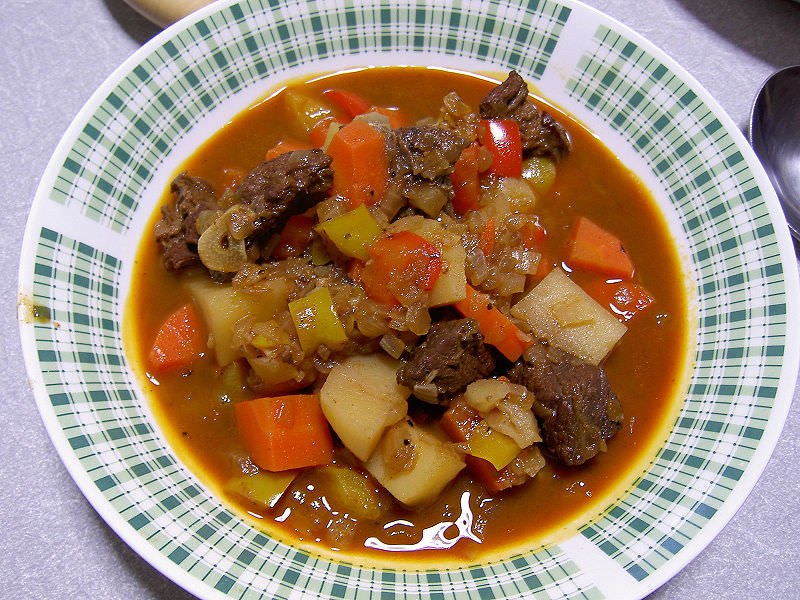
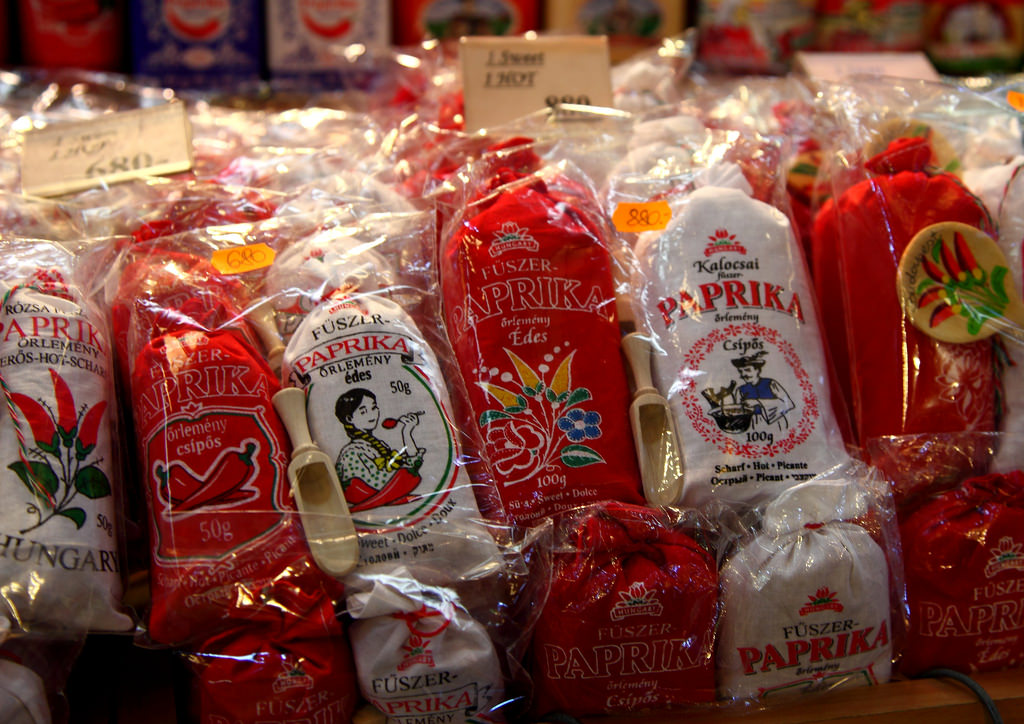
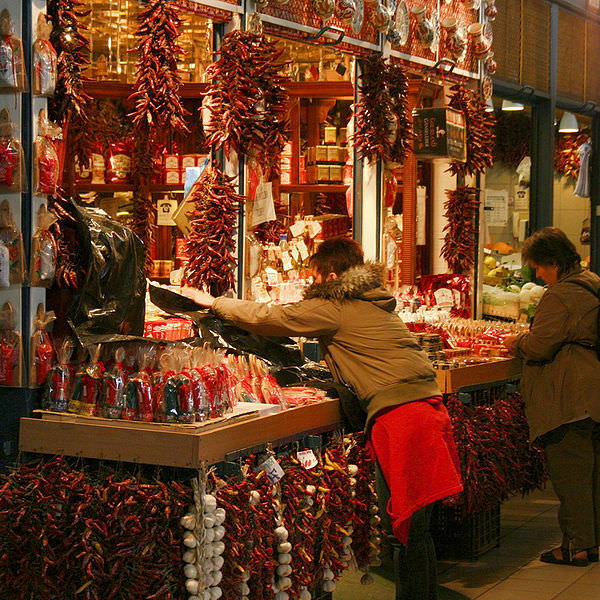
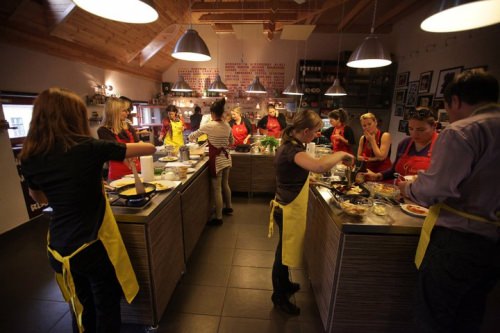
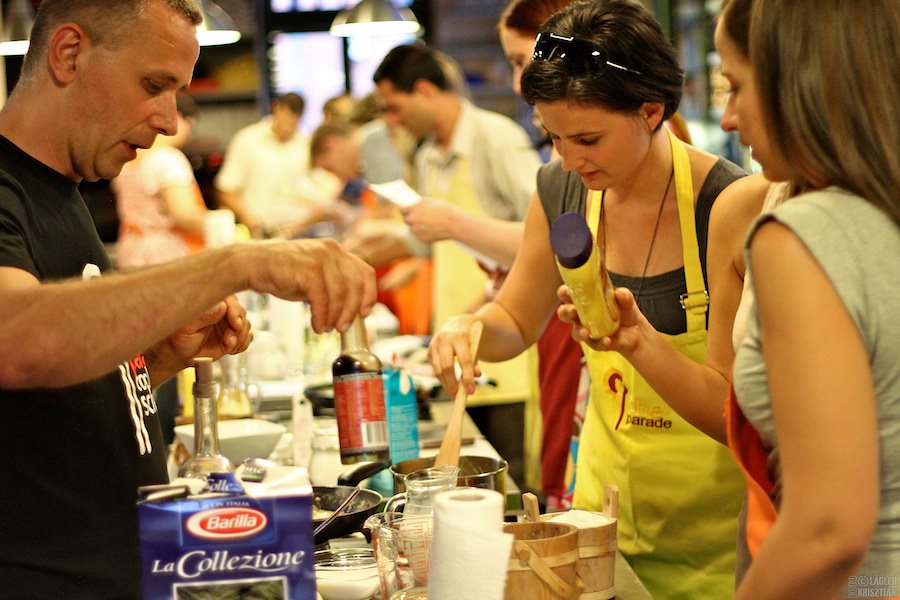
Raymond @ Man On The Lam
Thursday 18th of April 2013
Yum! Thanks for the recipe and info on paprika. Very useful.
Mattie Bamman
Sunday 21st of April 2013
Thanks, Raymond. It's great talking with and learning from such talented chefs. And to learn about Hungarian paprika straight from the source!